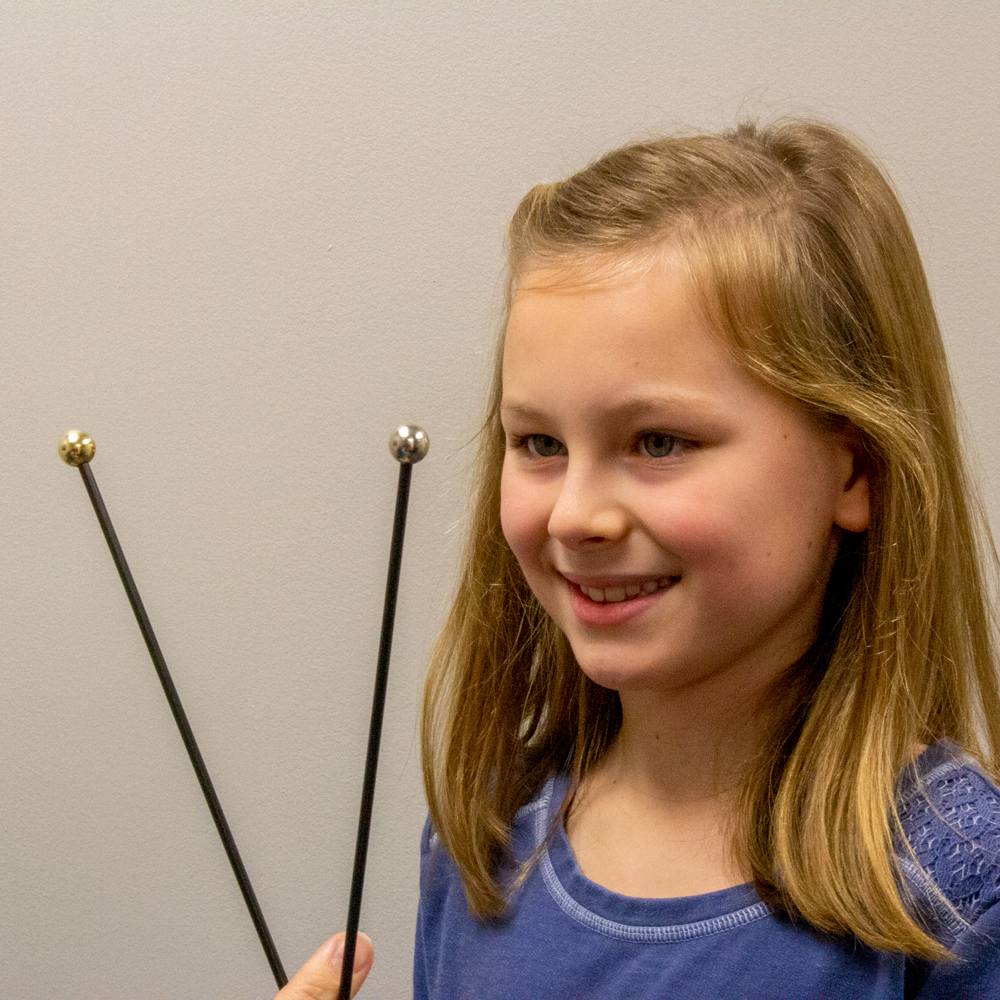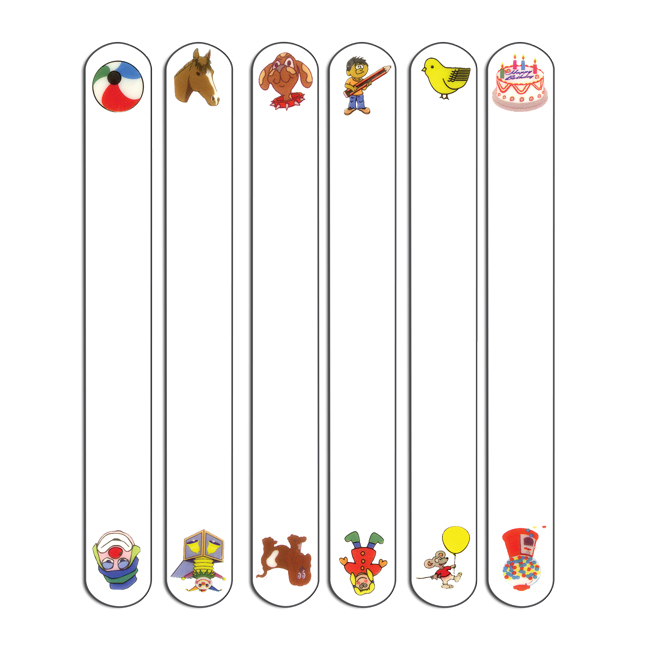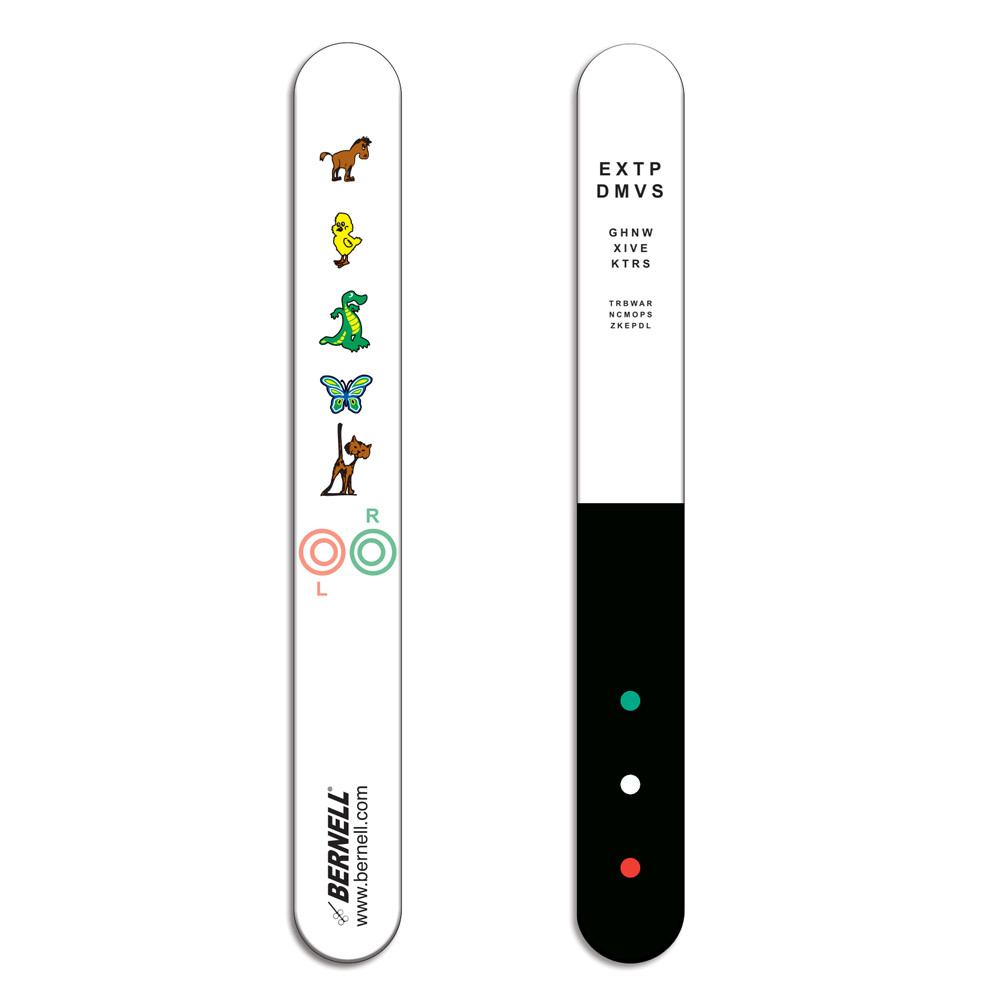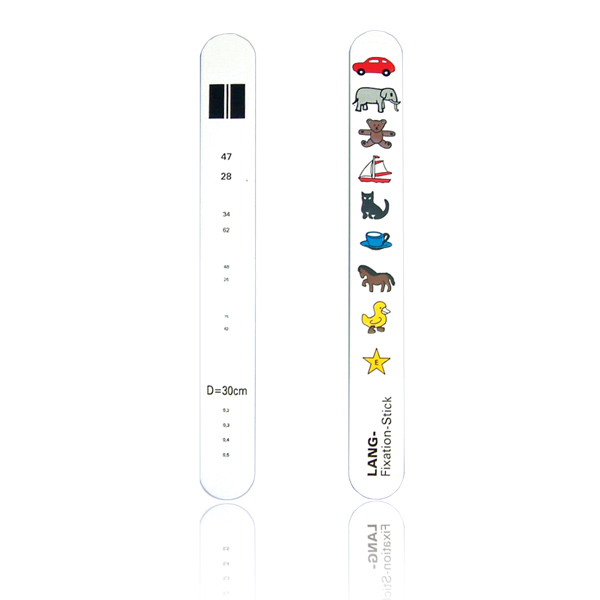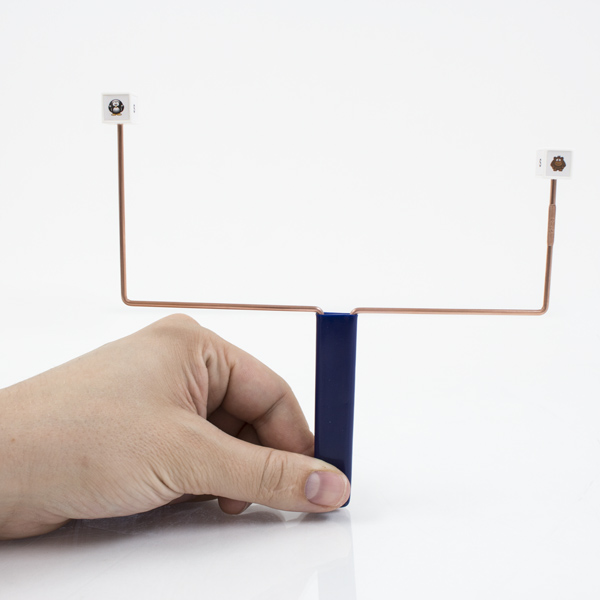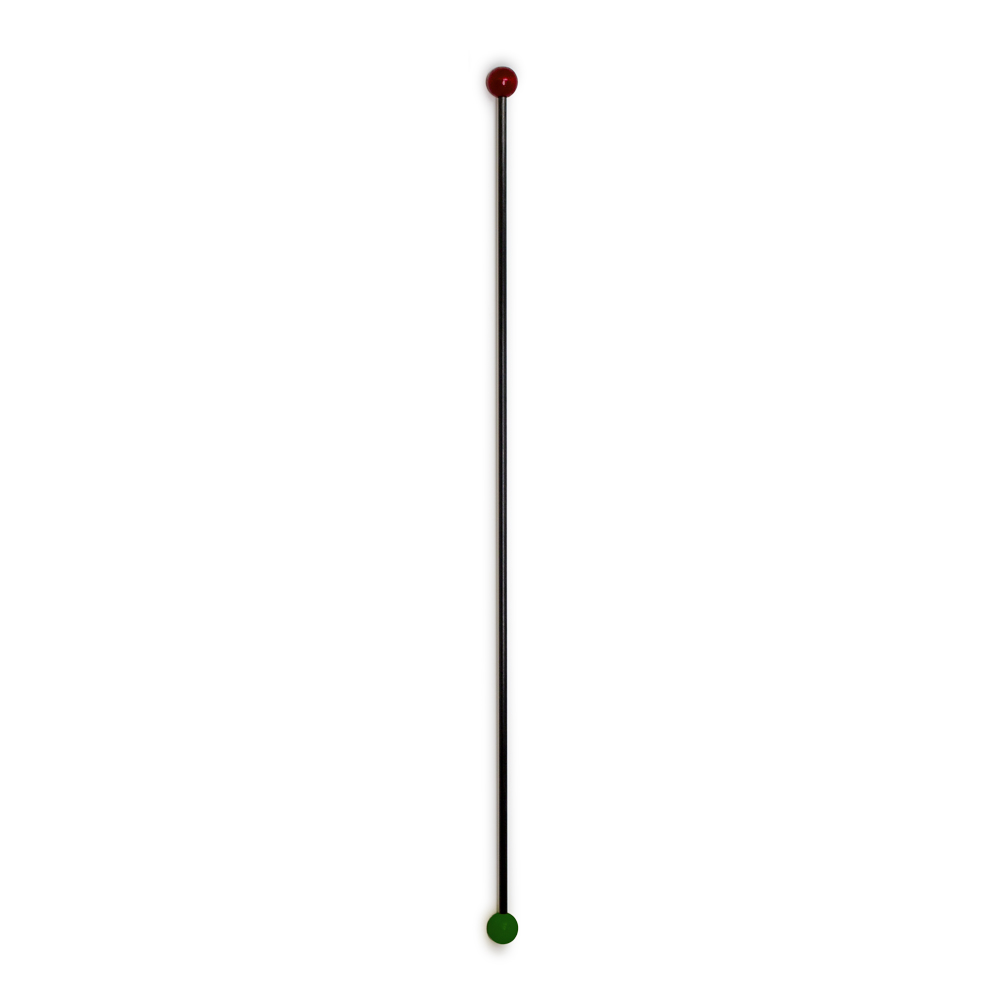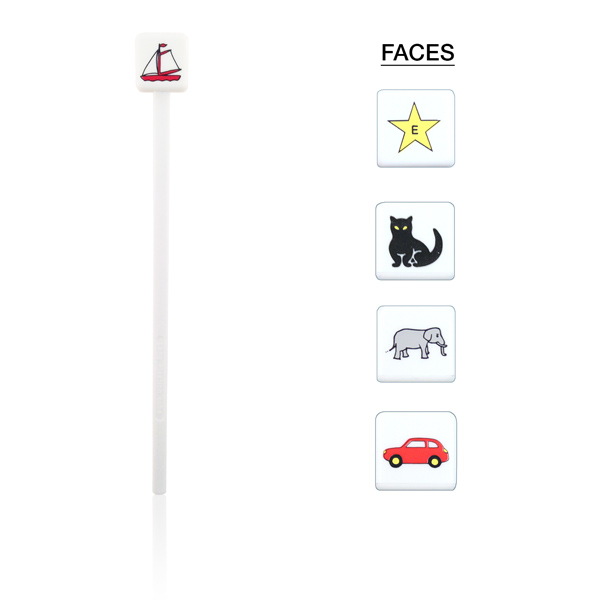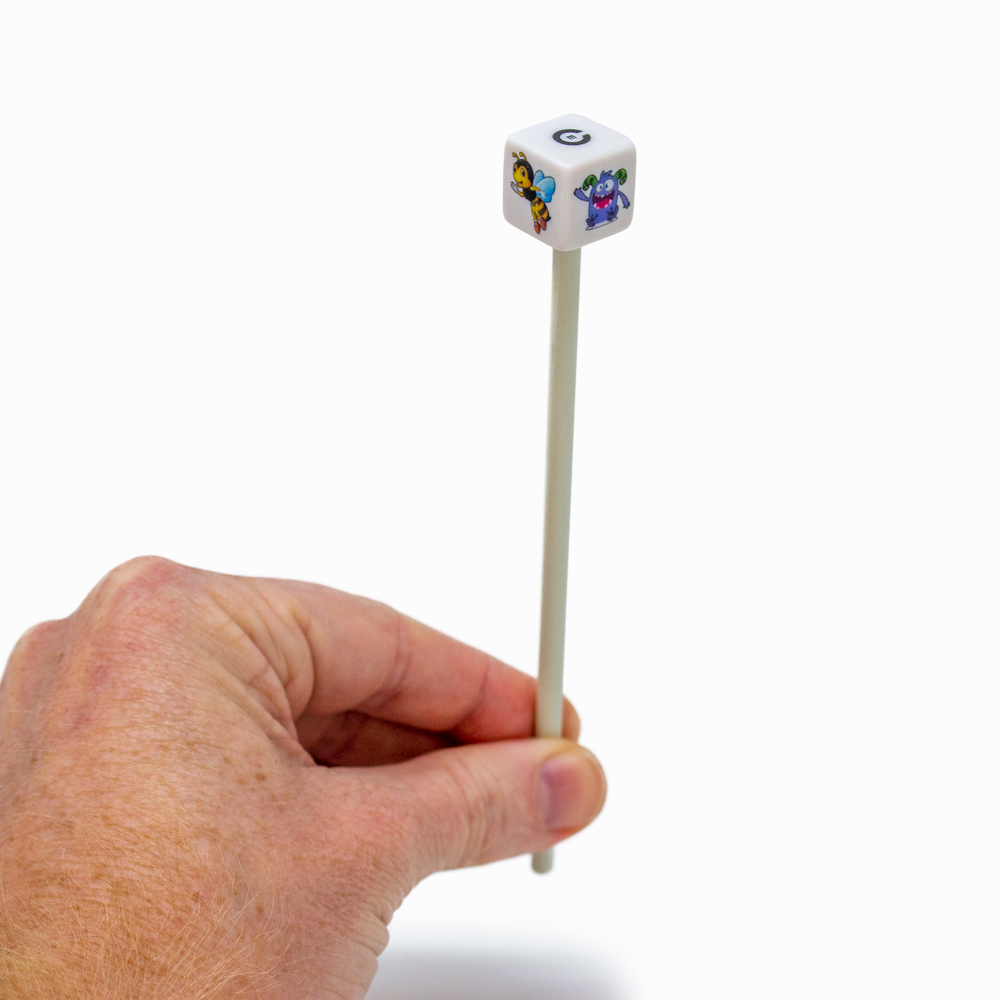Our Acrylic Fixation Balls are purposefully designed to support the accurate assessment of nearpoint visual skills in young children, including those with short attention spans or developmental delays. Based on clinically validated research, these clear acrylic spheres provide a unique and engaging fixation target that holds a child's attention while allowing clinicians to perform essential near testing with ease and precision.
When held in front of the examiner, each sphere produces a real, minified, and inverted image of the examiner's face--a naturally captivating visual stimulus for children. This dynamic effect encourages consistent accommodation and fixation, enabling quick and effective evaluation of:
- Nearpoint cover test
- Convergence nearpoint
- Dynamic retinoscopy
- Ocular motility
Lightweight yet durable, each sphere is mounted on a handle for easy maneuvering during testing. The optics of the sphere have been shown to deliver an accommodative stimulus highly correlated to traditional Snellen targets, making them a clinically reliable alternative for pediatric visual assessments.
Available Sizes:
- 1" sphere - recommended for infants and preschoolers
- 1.5" sphere - suitable for older children and varied clinical needs
Crafted from high-quality, optical-grade acrylic for long-lasting use in any pediatric or primary care setting.
Backed by published research validating its effectiveness as an accommodative stimulus in Bell retinoscopy.
Reference Study:
Richman JE, Garzia RP, Durkee D. Description of a Novel Fixation Target for the Examination of Young Children. The Michigan Optometrist. 1982;61(3):7-8.
 Click here to see the study
Click here to see the study
Summary:
This study introduces and validates the use of a clear acrylic sphere as a fixation target to aid in the optometric examination of young children. Traditional fixation toys and puppets, while engaging, often obstruct the clinician's view or produce inconsistent accommodative responses. The acrylic sphere offers a novel solution.
A clinical validation using Bell retinoscopy compared the accommodative response elicited by the acrylic sphere against reduced Snellen letters in 24 adult subjects. Results showed a very high correlation (r = +0.97, r² = 0.94), confirming that the sphere is a reliable stimulus for accommodation.
Clinically, the sphere is especially effective with infants, preschoolers, and developmentally delayed children, maintaining attention better than static or simplistic targets. Its dynamic and engaging properties also support pursuit movements and extended fixation.
Disclaimer: Please note that the products offered on our website have not been evaluated or reviewed by the United States Food and Drug Administration (FDA), unless explicitly stated otherwise. The information provided on this website is for informational purposes only and is not intended to diagnose, treat, cure, or prevent any disease or medical condition. The products offered on our website are not intended to replace or substitute any advice, diagnosis, or treatment provided by a qualified healthcare professional. It is strongly encouraged that any use of our products in an effort to improve visual skills only be done so under the guidance and supervision of a qualified healthcare professional. Although we at Bernell choose to sell our products exclusively to healthcare professionals as they are our target market, we strongly advise that anyone who may come across our products on a secondary market consult with a qualified healthcare professional before using any product. Additionally, we do not offer instructions for intended use, nor make claims for healthcare professionals, in how to diagnose, treat, cure, or prevent any disease or medical condition with our products. The majority of the items offered under vision therapy or vision training categories on this site fall under the FDA's General Wellness: Policy for Low-Risk Items. For safety reasons, we do not condone the use any of our products that occlude or restrict vision in any way while participating in activities that may require unrestricted vision.



